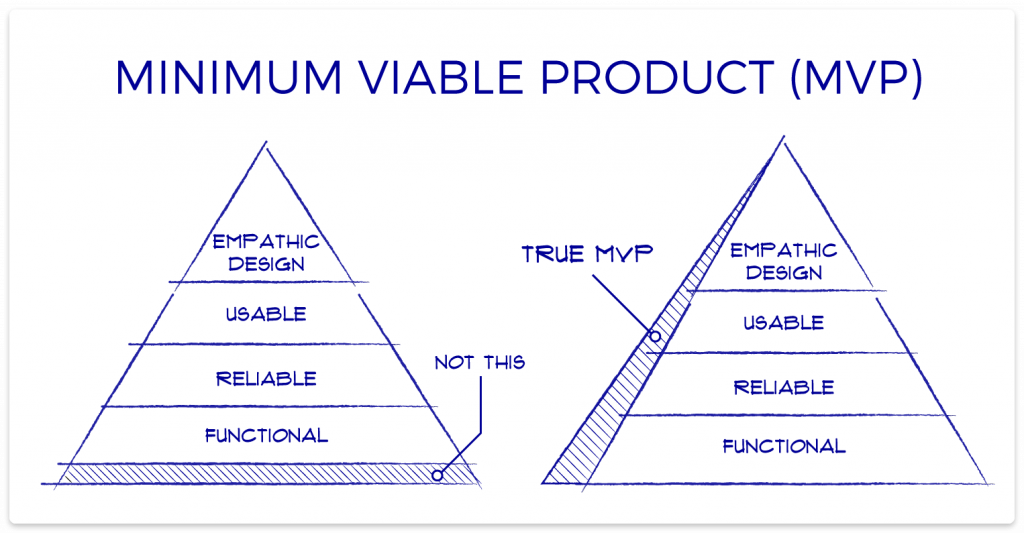3 Steps To Understand An App Development Proposal
Many of us will face a scenario at some point in our lives where we will have no idea how to assess the value of a product or service because there’s no standard frame of reference.
One good example is car repairs: if you didn’t grow up wrenching on cars, getting stuck with a bill equivalent to four car payments can be frustrating and confusing.
Worse yet, owning a business or being in charge of financial decisions when diving into the unfamiliar is another level of scary – too often, this is the case when assessing an app development proposal.
In fact, when it comes to building a new digital product, no one really knows what to expect between costs, time, or what indicators translate to value…
Because we want businesses to understand how to evaluate a proposal, we’re going to answer some questions that clarify how an app is priced, then discuss what to look for in an agency’s proposal.
Table of contents
- How to understand cost projections in a digital product proposal
- Beware of these red flags in app development proposals
- Look for these green lights
- Why our app development proposals answer questions
1. How to understand cost projections in a digital product proposal
Almost everyone takes to Google to try and find answers to app development costs only to walk away with somewhere between zero and twenty answers.
No good development company worth its salt posts anything close to an accurate price on their website, though we did make an attempt at disclosing a range here.
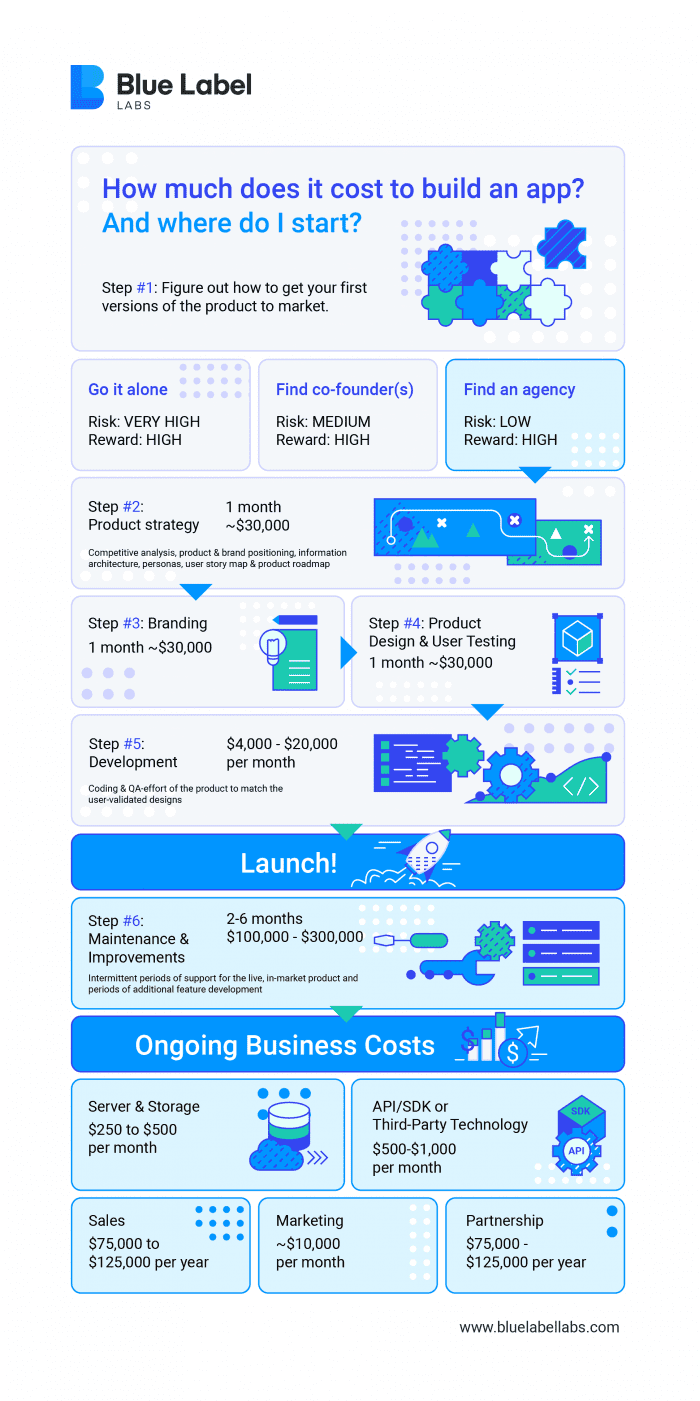
We don’t post our rates, make a launch-your-MVP-in-six-weeks promise, or guarantee we can make any idea a success. All of the above usually indicates there’s some kind of formulaic model in place that will yield undesirable, cookie-cutter results and should be treated as red flags.
It’s also important to recognize other outliers that some use when determining costs. It’s not hard to find a college sophomore who crushes programming projects and claims to be able to build your app for a cool five grand. Even though there are both individuals and companies with low price points and attractive portfolios, understand that there is a disparity between knowing how to code and building a successful business as these are two very different things.
While the coding portion is important, other processes like:
- running design sprints to plan and test a prototype,
- researching the market to identify a target audience,
- conducting additional user tests with that target audience,
- designing the UX and UI,
- developing a roadmap that starts with launching a solid MVP,
- working with stakeholders when deciding how to adapt to the user feedback,
- performing maintenance over time…
… and much more are all critical components of app development.
Some individuals do possess multidisciplinary skill sets that enable them to design and develop software, but it’s still too tall an order to fill for any one person except for the simplest of apps.
Good agencies provide a team with people who focus entirely on specific tasks that play to the individual team member’s strengths. Further, developers are assigned based on their fortes – the person who is well-versed with HIPAA statutes and has a great track record of healthcare app development might not be the best fit for building a Legend-of-Zelda-inspired game or vice versa.
The best agencies know how to allocate projects from their existing talent pool as well as source new developers or other experts when required.
The biggest takeaway here is that you need to look at an individual or agency’s track record of launching successful products. Design and development are only part of a much larger equation.
2. Beware of these red flags in app development proposals
A bad proposal is often hard to discern without knowing what to look for.
When interviewing some companies, you’ll find there are ambassadors with “can do” attitudes who whimsically reassure you that this and that are “no problem” while others are more deliberate in their approach, offering insight into the technical pieces that need to come together to create your vision. Though first impressions are important, it’s more important to see the process in print.
For a good idea of what to avoid, check out this article from Forbes that warns of bullshit promises. To reiterate and expand upon some of the most pressing red flags, we advise you to be wary of the following.
Beware of app proposals that are ready the next day!
Apps with any degree of depth require thought to plan for the time it will take to do all the things we covered in the last section.
Projects that parallel an agency’s past works are often easy to assemble in short order (i.e., a few days) but many need extra time to consult with other internal experts.
Like the product we created for JAXJOX, there are several exercise science components that needed to be comprehended to ensure proper integration into the app like capturing and processing information transmitted from the equipment.
In another example, the Delve platform we developed alongside Google’s Sidewalk Labs required merging architecture and engineering principles into an ML system to produce realistic projections for building sites.
As a general rule, the more scientific or novel your idea, the longer it will take a development team to conjure an adequate proposal.
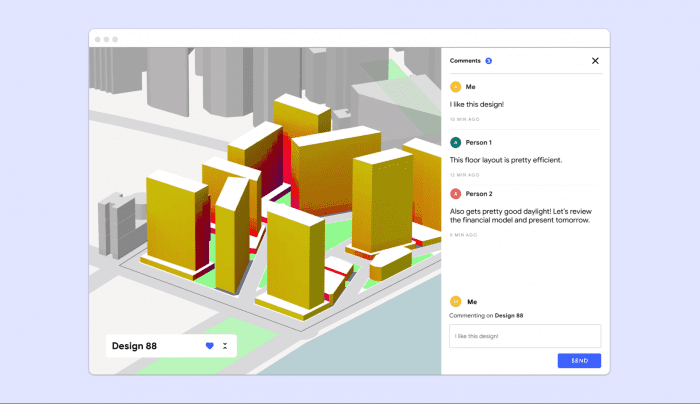
Check out our full case study on Delve.
Let’s say you want to enter the skilled trades training market with a VR product designed to emulate real-world commercial electrician duties.
Developing a curriculum to complete repairs based on textbook electrical theory is relatively straightforward, which is the extent of what most programs on the market do.
Beyond simple checks to see if circuits are functional and to code, there are so many other techniques VR could test like:
- cleanly bending conduit on uneven surfaces,
- maneuvering and mounting obtuse devices like solar panels,
- manipulating tools in a tiny crawl space of an old building…
An app development proposal for such an ambitious project would likely take a lot of time to gather information from experts like experienced field workers, meaning it shouldn’t be ready in a couple of days.
Be mindful of gaps that don’t fully explain how time will be allocated
To directly quote the Forbes article author mentioned earlier:
“Always insist on having a full breakdown and product specification included in a proposed quote—especially if you are budget-conscious and don’t know exactly what team you need.”
Experienced agencies should already be doing this so if you receive a brief document that only has a handful of general categories like design, coding, and QA itemized, then you’ve either found a group of savants or a business that doesn’t know what it’s doing.
The best agencies may not get it perfect but will attempt to accurately outline the time it takes for processes like research, UI design, writing code for navigating the app, developing the logic for a certain feature, integrating a plugin, and so on.
Like the VR training example above, it would take some time to research useful situations encountered by electricians as well as design functional solutions that would closely emulate the real world.
Complex solutions require additional time to functionally research so good proposals will incorporate language and time estimations for this portion of the development process.
Understanding pricing projections for long-term support
Over the lifecycle of an app, constant maintenance and feature enhancements will be required for it to function properly, such as after OS updates are released and when changes in the app store guidelines go into effect as well as to incorporate new features or patch bugs, among many other situations.
Agencies that don’t at least discuss these services might be inclined just to get the product out the door for any number of reasons. Those that purposely take on one-off projects might not believe the product can be successful in the long run or may just be looking for a quick payout.
However, It’s also too soon to have any kind of idea of what exactly ongoing support will look like years out. Sure, you can price around a roadmap but there will usually be some deviation after testing new features plus, as your product’s footprint grows, so do the costs to keep it running.
We usually have a good idea of what will be needed to support and maintain a product in the early days (e.g., after launch and up to any major feature releases) but like any business, things can rapidly change in a short time.
For example, a breakout success can lead to an immediate need for additional hands and resources to properly support a platform among countless other situations.
Across the board, it’s almost always in an agency’s best interest – and to a client’s advantage – to continue working together in the long run. For an agency, this means stability through recurring revenue and the chance to support a product they understand as they’ve ideally grown close to the product.
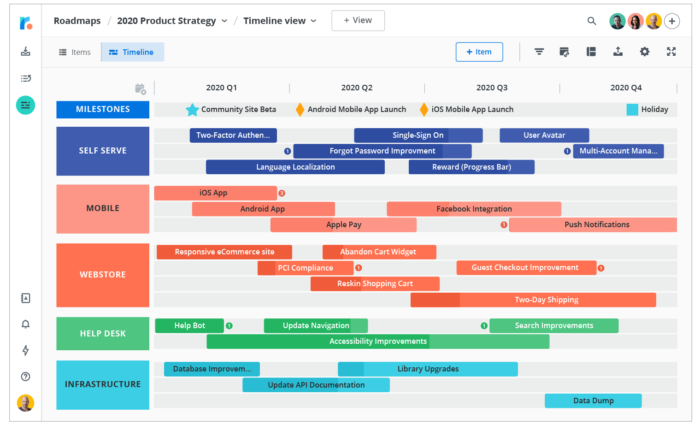
As you can imagine, making changes or bringing new talent will take planning and time to pull off. | Source: Roadmunk
Agencies that have been supporting a product since day one will know the product roadmap, allowing them to keep the vision in sight but will also have the insight that comes from time spent working on the system.
A good working relationship can go a long way as there will be challenging times throughout any product’s lifecycle and they’ll be much easier to overcome when working together.
3. Look for these green lights
Now that we’ve covered what to avoid, here comes the hard part – what the hell determines what constitutes a “good proposal?”
Great app companies will project the following mentality and values during interviews, the content they furnish, and through their app development proposal.
There’s a holistic business-minded approach to meeting goals
Getting results from your app means developing actionable processes around business goals, not the other way around.
By grasping your business goals and key performance indicators (KPIs) from the start, designs will be tailored into a functional product that meets users’ needs.
For example, if you’re in the business of building furniture, you need screwdrivers to assemble your products – should your tool vendor offer you butter knives, productivity is either going to suffer or you’ll need to shift your business goals around a model that sells peanut butter sandwiches.
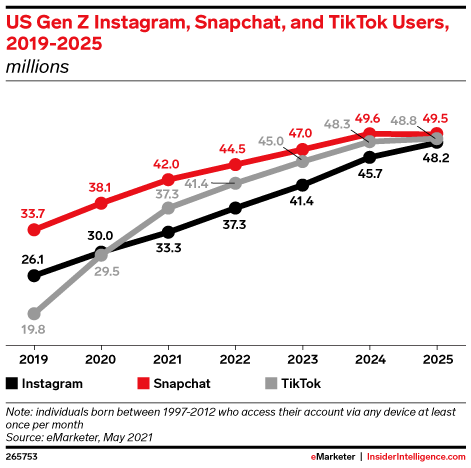
Whether or not “sharing is caring” is actually true, it certainly helps growth. | Source: eMarketer
In another example, if you’re looking to achieve virality quickly, it’s important that features are directly connected to business goals and that content is shareable.
Think of how TikTok’s surge in popularity can be primarily attributed to its ability to share on Instagram which attracted new users to the platform.
There’s a strong minimum viable product (MVP)-centric mentality
Your MVP is arguably the most important iteration of your product as it allows you to enter the market with a highly-refined app and begin testing business hypotheses before going all in.
There are a myriad of reasons to start with an MVP, most notably because assumptions you form when imagining the product may not resonate with your audience in the real world.
You gotta start somewhere! | Source: Snov.io
Let’s say you’re tasked with planning catering for a large event so you decide to go with a wildly popular local provider that’s known for their smoked meats. You opt for three entrees featuring brisket, burnt ends, and Kobe, covering all the bases for different palettes. Come to find out, you overlooked one small detail – the majority of people you’re feeding are vegetarian.
Before putting time into building out features that seem viable for your target market, remember that well-established services like Uber didn’t start with Uber Black or UberXL and Instagram didn’t launch with video.
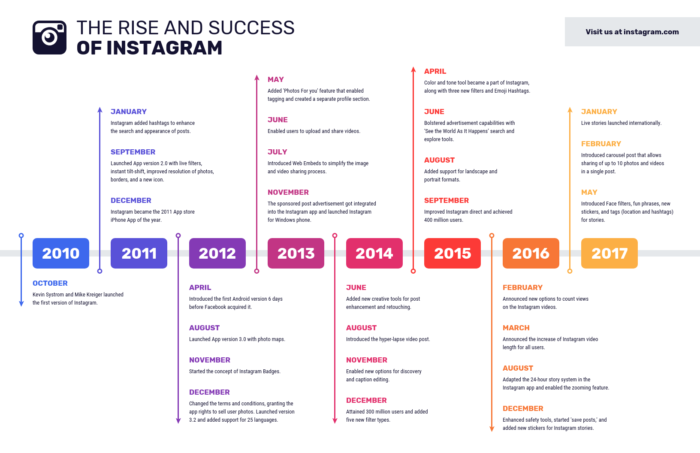
Build. Test. Learn. Adapt. Repeat. | Source: Venngage
Take a look at the simplified timeline of Instagram above that demonstrates how the platform started as a spin to existing social media platforms then evolved to accommodate desirable features throughout time.
It’s safe to assume that video support was likely planned during the time the idea for the platform was conceived but didn’t come into play for a few years after launch.
For an MVP, removing risk is literally built into the name:
M = minimum, V = viable, and P = Product.
It’s minimal because that makes it cheaper. It’s viable because, well, you need to build it for early adopters that care and have a burning need for your solution. And it’s a product because, well, duh.
If you don’t focus on the M, you’ve overbuilt and overspent. If you don’t focus on the V, then you’ve satisfied no one.
An MVP allows you to get to market with a version of your product that early adopters will use and love – mind you, not everyone on the planet – as well as evangelize, because that’s what early adopters do.
A user testing-driven strategy is in place
To build on the point above, meticulous user testing needs to be performed to ensure user needs are met before a major investment is made toward new developments. By design, this helps ensure a future release aligns with actual analytics and feedback.
Remember how successful great ideas like Google+ and Amazon phones were? Exactly.
While large companies like Google and Amazon can recover from such blunders (because they have nearly endless capital), your business will not be so lucky.
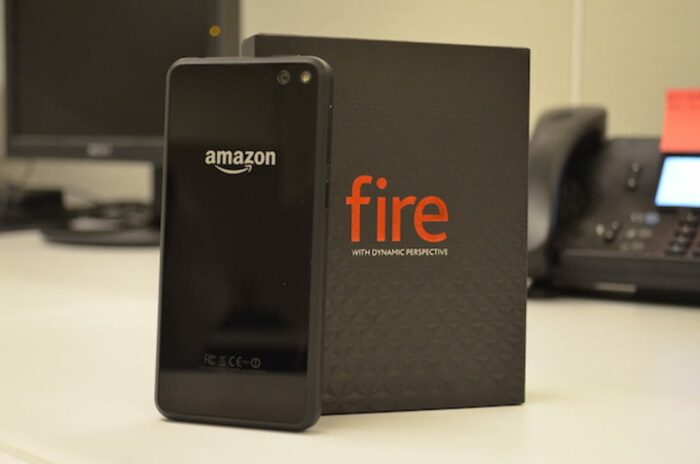
Once you’re filthy rich, can invest in deluded ideas and just write everything off after you fail. | Source: ZDNet
Think of your MVP like a leased vehicle – if it’s been problem-free and you’re way under projected mileage, you should opt for the buyout.
However, if it’s a Jeep Renegade, you might want to cut your losses at the end of the contract in favor of a vehicle that won’t implode (if it hasn’t already.)

All that cuteness is designed to soften the blow for all the powertrain issues you’ll have in your future. | Source: Car and Driver
There’s a famous quote attributed to Henry Ford that supposedly reflected his design process :
“If I asked people what they wanted they would have said a faster horse.”
And while the quote is probably made-up, I’d argue that so is the original premise of the question. I’d argue that perhaps Henry Ford was a great inventor, but surely was not an experienced Product Manager skilled in asking the right questions to the right people.
The question Henry should have asked (if he even asked it at all) would be,
“If you could improve your horse, how would you do it?”
Likely, he would have gotten answers like, “I wish I didn’t need to feed the damn thing all the time,” or, “I wish I could travel more than 50 miles without having to stop.” Here, we have answers we can work with.
People want to save on “fuel,” travel farther, and increase the pullable load. Asking the right questions of the right people is half the battle in product development.
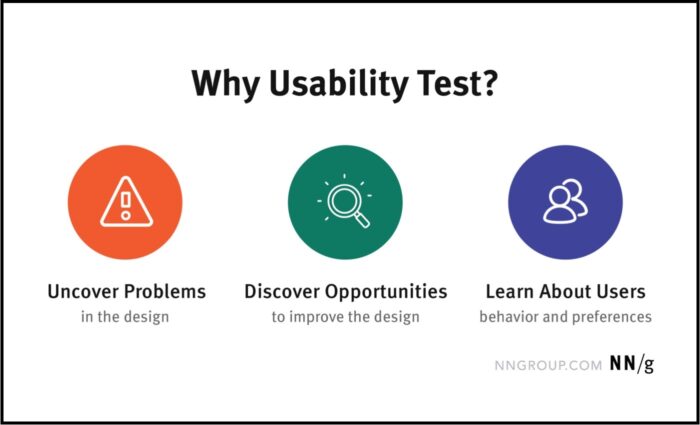
Research and testing need to serve as the foundation for your product and each iteration thereafter. | Source: Nielsen Norman Group
A high level of relevant experience backed by good ratings & reviews. If you’re looking for a company to develop an app for wearable devices, look for companies that promote “battle-tested” successes in this area.
Much like the developer example from earlier where you wouldn’t want to hire a game developer to work on a healthcare app, it’s best to find agencies that have a good track record of specific expertise. Some agencies will be able to showcase successes with a variety of products while others cater to specific niches.
Make sure the agency you’re eyeing has something akin to your idea under their belt – if your idea is truly innovative (i.e., there’s nothing on the market quite like it), shift your criteria in evaluating agencies by learning how they approached something new to them.
Use sites like Clutch, GoodFirms, and other reputable sites to understand how past clients feel about their experiences and pay special attention to reviews where the agency delivered a truly unique or first-of-its-kind product to the market if such examples exist.
Also: talk to references!
If an agency can’t give you five or more references, that’s because they don’t have five or more people who have been happy with the work they’ve done.
Price and timeline deliver value
Of all the points we just covered, this should be explicitly written into a proposal. Great agencies that understand your budget, time constraints, and metrics-driven goals/KPIs will do their best to deliver a product that heeds your conditions.
When there is some workable discrepancy, viable options will be presented that keep your business goals in mind. Demonstrating some flexibility when necessary is good, however, extreme shifts should be cause for concern.
Imagine this: the MVP for your app is like the iconic Oreo snack that’s composed of three distinct parts, including two cookie ends and the layer of sweet cream in between that sticks to one side or the other when pulled apart. The agency says it will take $400K to do it right so backpedaling to meet your budget cap of $200K will probably mean halving the deliverables.

The Oreo is the ideal commercially-produced snack to eat while reviewing an app development proposal. | Source: Eat This, Not That!
Exceptional agencies will ask you to slim your idea to a true MVP whereas others might push the deal and only produce a half Oreo… the half with no cream. Though the motif of a design sprint is “cut and cut some more,” there are certain baselines needed to establish a product, like the signature cream in an Oreo.
Now, let’s take this ridiculous Oreo analogy a step further – a quality agency will not tell you to build a smaller Oreo but instead ask you which part of the Oreo your early adopters really want.
Perhaps you find your audience isn’t looking for an Oreo at all but instead, a delicious chocolate wafer that is perfectly dunkable in milk.
Your earlier adopters might be lunatics who reject the high-fructose goodness that is the Orea filling yet, with that, you’ve satisfied your early adopters’ needs and uncovered a perfect starting point for your business.
Our app development proposals answer questions, not introduce more confusion
When we build a digital product, our mission is to make sure your users (i.e., early adopters) are delighted and that you, as the founder, enjoy the process.
Blue Label Labs starts by making sure everyone is on the same page with a clear proposal that gives our customers peace of mind and our team members the certainty they need to create with conviction.
By getting in touch with us, we will address your concerns and ultimately produce a proposal that reflects your business goals.
We strive to accommodate your conditions and promise not to deliver Oreo halves with no cream!







